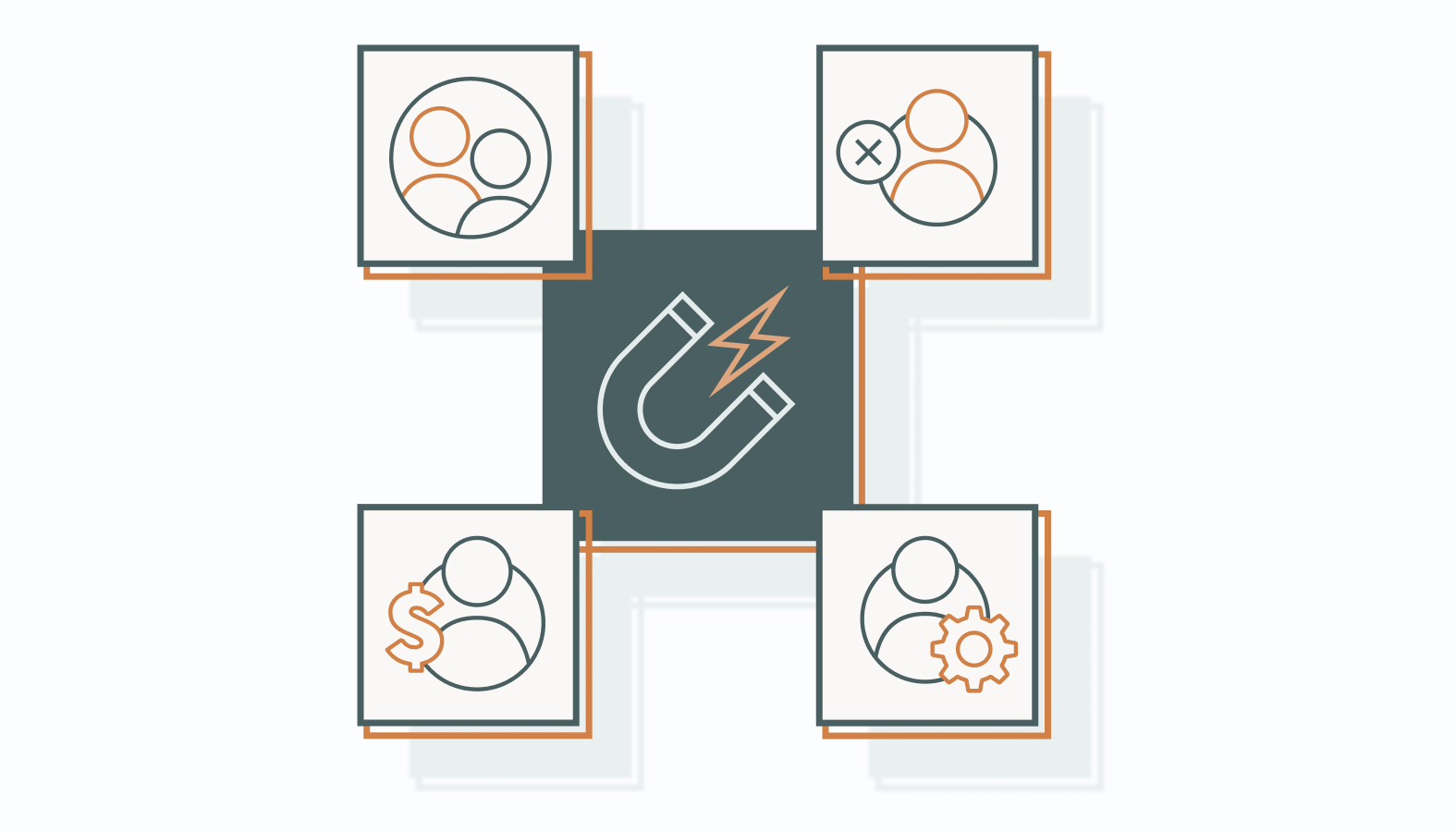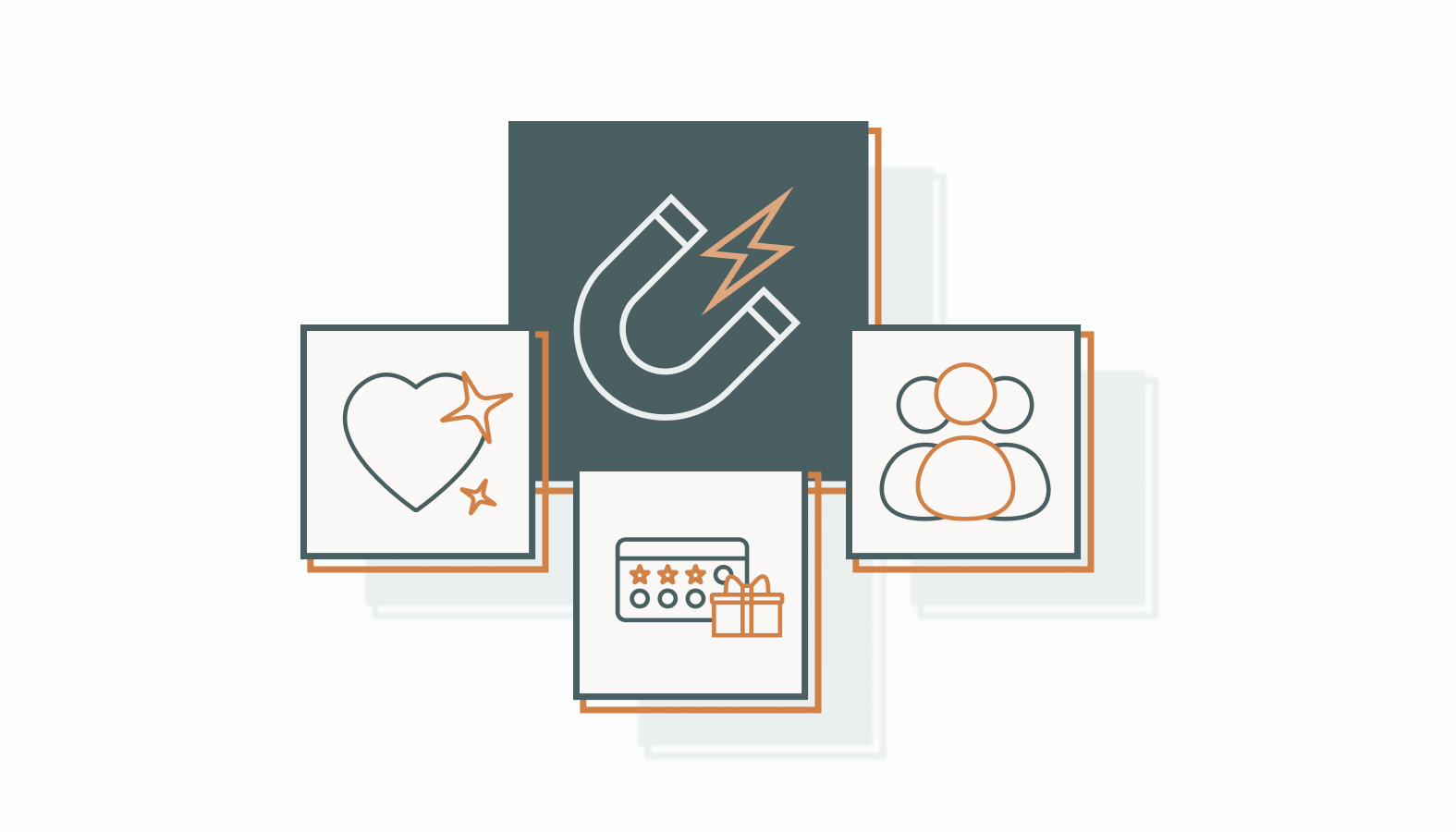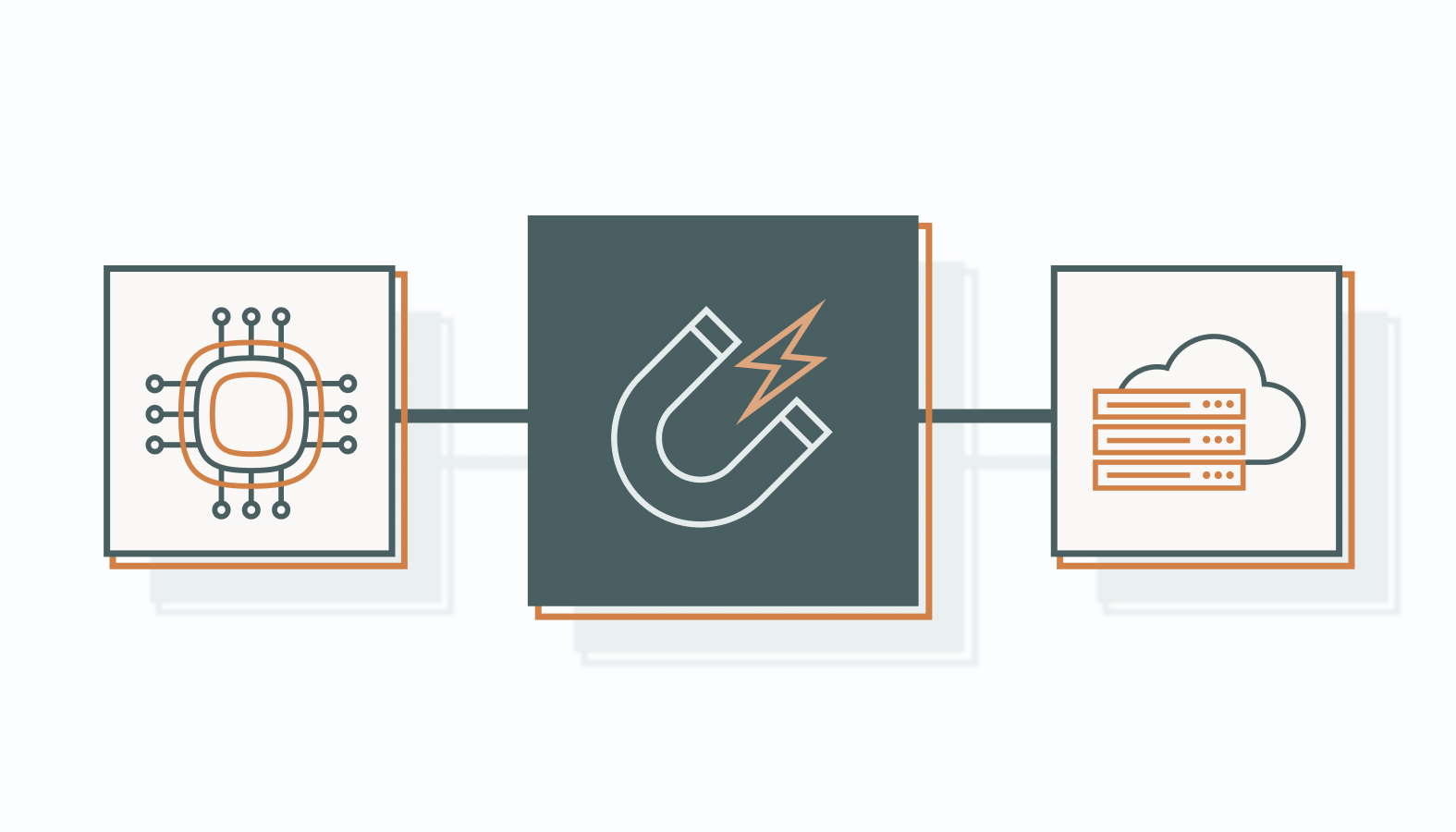Winning customers is one thing, but keeping them is where the real momentum builds.
A 5% increase in retention can drive profits up by as much as 95%, proving that loyalty is a growth engine.
The businesses thriving today focus on turning existing customers into repeat buyers, brand advocates, and long-term revenue drivers.
But here’s the catch: Retention doesn’t happen by accident. It takes strategic execution, involving seamless experiences, personalized engagement, and proactive customer care.
In this guide, we’ll break down the essential tactics, key metrics, and game-changing insights to help you build a retention strategy that keeps customers coming back.
The Power of Customer Retention
Customer retention is a profitability engine. Keeping existing customers engaged and satisfied means more than steady revenue; it turns them into brand advocates who drive organic growth through word-of-mouth.
Why does this matter? Because acquiring a new customer can cost 5X more than retaining one. And according to Bain & Company, increasing retention by just 5% can boost profits by 25% to 95%. That’s not a minor bump — it’s a game-changer.
Loyal customers also spend more. Adobe found that repeat buyers spend 3X more than one-time customers. Plus, the odds of selling to an existing customer sit at a strong 60-70%, compared to just 5-20% for a new prospect.
Amazon mastered this playbook. Through personalized recommendations and seamless service, they’ve built a retention powerhouse reflected in repeat purchase rates and soaring customer satisfaction.
The bottom line? Investing in customer retention is cost-effective and can be a direct path to long-term growth, higher profits, and a brand customers don’t just buy from but stick with.
Guide to Mastering Customer Retention Metrics
Retention metrics are the pulse of your customer relationships. They reveal engagement, satisfaction, and loyalty, helping you fine-tune strategies, reduce churn, and drive profitability.
By focusing on the correct data, businesses can see what’s working, identify gaps, and build smarter retention strategies that keep customers returning.
Customer Retention Rate: The Loyalty Litmus Test
Customer Retention Rate (CRR) is the metric that separates thriving businesses from those constantly chasing new leads. It measures the percentage of customers who stick with you over a given period, giving you a clear snapshot of loyalty and long-term engagement.
Here’s the formula: CRR = ((E-N)/S) x 100
Where:
- E = Total customers at the end of the period
- N = New customers acquired during the period
- S = Customers at the start of the period
A strong retention rate signals that customers trust your brand and find ongoing value in your products or services. It also means your retention strategies are doing their job, reducing churn and maximizing lifetime value.
Let’s say you run a subscription-based fitness app. At the start of the month, you have 2,000 active subscribers. Over the next 30 days, you gain 500 new sign-ups, but 300 existing users cancel their subscriptions.
Plugging the numbers into the formula:
- CRR=(2,200−500/2,000)×100)
- CRR=(1,700/2,000)×100=85%
An 85% retention rate suggests your app delivers enough value to keep most subscribers engaged, but the 15% churn highlights room for improvement.
Analyzing why those 300 users left (can be due to pricing, lack of new content, or a better offer elsewhere) can help fine-tune your strategy and strengthen long-term loyalty.
While acquiring new customers is always a priority, holding onto existing ones is where profitability skyrockets. Studies show that even a slight increase in retention can drive a significant boost in revenue, proving that loyalty is one of the smartest investments a business can make.
Churn Rate: The Canary in the Coal Mine
Churn Rate measures how many customers cut ties with your business over a set period. It is the early warning system for customer dissatisfaction, signaling when engagement is slipping and loyalty is fading.
The formula is straightforward: L/S * 100 = customer retention rate
Where:
- L = Customers lost during the period
- S = Customers at the start of the period
A high churn rate can mean trouble. It suggests gaps in customer experience, pricing misalignment, or a competitive advantage slipping away.
The goal is to track churn and understand why customers leave. Patterns in churn data reveal whether customers drop off early, disengage after a few purchases, or vanish when a competitor offers a better deal.
Using the same fitness app scenario, you started the month with 2,000 subscribers. By the end of the month, 300 users canceled their subscriptions.
Now, let’s calculate the churn rate: (300/2,000) x 100 = 15%
A 15% churn rate indicates that some customers are slipping away. Maybe they hit a plateau in their fitness journey, found a competitor’s app more appealing, or didn’t feel engaged enough to stick around.
The key is to find out why they left and address those pain points. If cancellations spike after the free trial ends, your onboarding experience might need work. If long-time users are dropping off, fresh content and loyalty incentives could keep them engaged.
Lowering churn requires a proactive approach. Personalized engagement, stellar customer support, and continuous value delivery keep customers invested.
Businesses that analyze churn patterns and refine retention strategies can transform potential losses into long-term loyalty. This approach turns one-time buyers into lifelong advocates.
Customer Lifetime Value (CLV): The Ultimate Business Scorecard
Customer Lifetime Value (CLV) is the long game. It tells you how much revenue a single customer will likely generate throughout their relationship with your brand. The higher the CLV, the more you get out of each customer without constantly refilling the pipeline with new ones.
The Formula: CLV=Average Purchase Value×Purchase Frequency×Customer Lifespan
Breaking it down:
- Average Purchase Value – The typical amount a customer spends per transaction.
- Purchase Frequency – How often they buy from you.
- Customer Lifespan – How long they stick around before moving on.
This metric is a goldmine for shaping your marketing, pricing, and customer retention strategies. If CLV is strong, you know your customers see value in your brand. If it lags, you might miss out on upsell opportunities, repeat business, or long-term engagement.
A customer who makes 10 purchases at $50 each over five years is worth $2,500 to your business. Compare that to someone who buys once and never returns. Retaining and nurturing high-value customers increases profitability without the constant expense of acquiring new ones.
Companies with strong CLV strategies focus on customer experience, loyalty programs, and personalized engagement. They build relationships, not just transactions. Every interaction is an opportunity to increase CLV, whether through better service, exclusive perks, or data-driven recommendations that keep customers returning.
Tracking CLV helps businesses move beyond short-term wins and focus on sustainable, long-term success. If you are not measuring it, you leave money on the table.
Repeat Customer Rate and Purchase Frequency: The Dynamic Duo of Customer Retention
Repeat Customer Rate shows the percentage of customers who return for another purchase.
- Here’s how to compute it: Repeat Customer Rate=(Returning Customers/Total Customers)×100
- A high Repeat Customer Rate signals strong customer loyalty, meaning your brand has staying power. It also tells you if your products, services, and overall experience are compelling enough to keep people coming back.
- If this number is low, you might have an acquisition problem disguised as a retention issue.
Purchase Frequency tracks how often customers make a purchase within a set timeframe. It is calculated as: Purchase Frequency=(Total Purchases/Unique Customers). This metric is a direct indicator of engagement. The higher the frequency, the more consistently customers interact with your brand.
A subscription box company, for example, would expect a much higher Purchase Frequency than a luxury watch brand. Understanding where your business falls on this spectrum helps fine-tune marketing strategies.
Why These Metrics Matter
When Repeat Customer Rate and Purchase Frequency are both high, you have a customer base that is loyal and engaged. If Repeat Customer Rate is solid but Purchase Frequency is lagging, you should introduce incentives like loyalty programs, personalized offers, or seasonal promotions to drive more frequent transactions.
Tracking these numbers helps businesses craft more thoughtful retention strategies, optimize customer experiences, and maximize revenue. Customers who return and buy often are the backbone of sustainable growth.
Customer Retention Strategies That Drive Growth
Keeping customers coming back is more than just good business. A strong retention strategy fuels steady revenue, lowers acquisition costs, and turns satisfied buyers into loyal advocates.
When done right, it builds lasting relationships that drive sustainable growth and brand credibility.
1) Upgrade Your Customer Support. Elevate Your Retention
Want to keep customers coming back? Make their experience seamless, responsive, and personal. The companies winning in retention aren’t just solving problems but anticipating them.
Here’s how to level up your support game:
Customer-Friendly Omnichannel Support: Your customers bounce between email, chat, social media, and phone calls. If your support isn’t keeping up, you’re losing them.
- Sync Your Channels: Make every interaction feel connected, no matter where it happens.
- Unify Your Data: A solid CRM ensures no one feels like a stranger.
- Train for Consistency: Every team member should deliver A+ service every time.
Speed is Everything: Customers don’t wait around. If you’re slow, they’re gone.
- Automate Smartly: Set up chatbots to handle FAQs so humans can focus on complex issues.
- Streamline Workflows: Fix inefficiencies, cut response times, and keep customers happy.
- Sharpen Your Team: Ongoing training means faster, better resolutions.
Make It Personal: Customers aren’t just ticket numbers. Treat them like VIPs, and they’ll stick around.
- Leverage Data: Use CRM insights to craft tailored offers and responses.
- Segment Strategically: Different customers, different needs. Customize accordingly.
- Listen and Adapt: Feedback isn’t just noise. Use it as your roadmap to better retention.
Flawless support isn’t a bonus. It’s the difference between customers staying or straying. Time to tighten up the experience and keep them coming back.
2) Enhance Customer Loyalty
Loyal customers are the backbone of long-term success. They buy more, stick around longer, and bring their friends. The trick is to give them a reason to stay.
Loyalty Programs That Actually Work: Throwing points at customers won’t cut it. A strong loyalty program keeps them engaged and returning for more.
- Know Your Audience: Data is your best friend. Build a program around what your customers want.
- Make Rewards Worth It: Discounts, freebies, VIP access and other programs that give them something they can’t ignore.
- Keep It Effortless: If they have to jump through hoops, they won’t bother.
Look at Starbucks. Their rewards program turns coffee runs into a game. More stars, more perks, more repeat business.
Referral Programs, Turning Customers into Your Best Marketers: People trust recommendations from friends more than ads. A solid referral program turns that trust into revenue.
- Give Them a Reason to Share: Reward both the referrer and the new customer. Win-win.
- Make It Simple: The easier it is to refer, the more people will do it.
- Track and Tweak: Use analytics to fine-tune your approach and maximize results.
Loyalty isn’t a given. Earn it, reward it, and watch your customer base grow.
3) Happy Employees and Loyal Customers
A disengaged workforce delivers forgettable service. A team that’s motivated, valued, and thriving? That’s the foundation of customer loyalty. When employees feel invested in, customers notice.
Power Up Employee Satisfaction. Engaged employees create better experiences, drive retention, and make your brand look good. Simple as that.
- Recognition Programs: Celebrate wins, big or small. A little acknowledgment goes a long way.
- Growth Opportunities: Give them tools to level up. Training and career development boost loyalty on both sides.
- Culture That Supports Them: A positive, inclusive environment breeds innovation and better service.
Turn Customers Into a Community: A brand without a community is just another transaction. People stick with businesses that make them feel like they belong.
- Host Meaningful Events: Webinars, meetups, and workshops turn customers into engaged advocates.
- Create Online Spaces: Forums and groups give customers a place to connect, share experiences, and support each other.
- Leverage Social Media: A thriving Facebook or LinkedIn group keeps engagement high and conversations flowing.
Build a workplace people love, create a community customers trust, and watch satisfaction and retention skyrocket.
Smarter Customer Retention Through Technology
Customer retention is getting an upgrade. AI, machine learning, and data analytics allow modern businesses to anticipate needs, personalize experiences, and streamline operations. This results in stronger customer relationships and sustained growth.
AI-Powered Retention: Smarter, Faster, More Effective
AI and machine learning are rewriting the rules of customer retention. These technologies anticipate, personalize, and automate, keeping customers engaged before they even consider leaving.
- Predictive Analytics: AI sifts through mountains of data to spot patterns and forecast customer behavior, helping businesses stay ahead of churn.
- Personalization: Machine learning fine-tunes experiences with razor-sharp precision, serving up exactly what customers want before they know they want it.
- Automation: AI-driven chatbots and virtual assistants handle routine inquiries in real-time, allowing human agents to focus on high-value interactions.
Look at Netflix, its AI doesn’t just suggest shows. It crafts an entire experience based on viewing habits, keeping subscribers hooked.
Amazon’s recommendation engine does the same for shopping, nudging customers toward their next purchase with eerie accuracy.
The future of retention isn’t guesswork. It’s data-driven, automated, and ridiculously effective.
Utilize Data-Driven Retention Strategies for Stronger Loyalty
Customer retention isn’t guesswork. It’s a science. Data analytics turns raw numbers into strategic firepower, revealing precisely where to engage, improve, and innovate.
- Customer Engagement Tracking: Analytics tools map out how customers interact with your brand, spotlighting friction points and opportunities to level up their experience.
- Satisfaction and Loyalty Measurement: Surveys and feedback aren’t just for show. Data transforms them into a roadmap for identifying at-risk customers and boosting retention.
- Behavioral Analysis: Understanding customer journeys and buying patterns means you’re not reacting to trends but staying two steps ahead.
How to Make It Work:
- Unified CRM Systems: Centralize customer data for a full-spectrum view of interactions, making insights instantly actionable.
- Real-Time Analytics: Spot shifts in customer behavior as they happen and pivot with precision.
- Cross-Functional Collaboration: When marketing, sales, and support align, customer experiences become seamless and retention skyrockets.
Data doesn’t just tell a story. It hands you the script for faster and more effective retention strategies that keep customers coming back.
Retention Separates Industry Leaders from the Rest. Where Do You Stand?
Customer growth shouldn’t focus solely on acquisition. It must also keep the right customers for the long haul. Businesses prioritizing retention create stability, drive higher revenue, and build a brand people return to and recommend.
A strong retention strategy gives you an edge. It helps you adapt to market shifts, strengthen customer relationships, and outperform competitors who rely too heavily on new leads.
Let’s Strengthen Your Customer Base
Customers don’t give businesses their loyalty on a silver platter automatically. Brands must build loyalty through intentional retention strategies.
If you’re looking for ways to turn one-time buyers into repeat customers, improve retention, and increase customer lifetime value, we can help.
No gimmicks, no pressure — just practical insights to help you keep more of the customers you’ve already won. Schedule a chat with one of our customer retention experts today.









